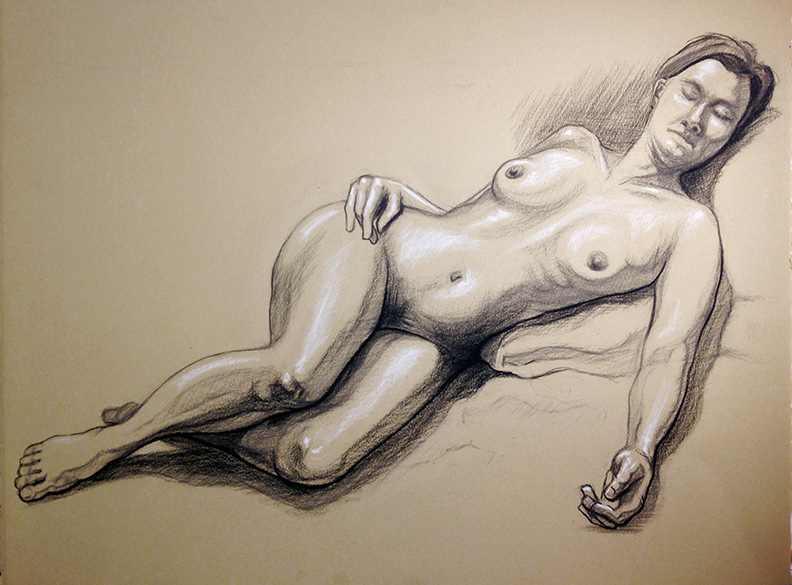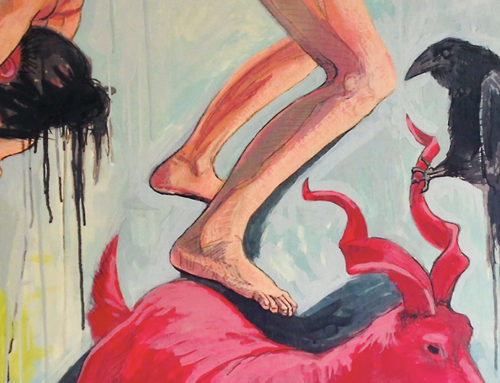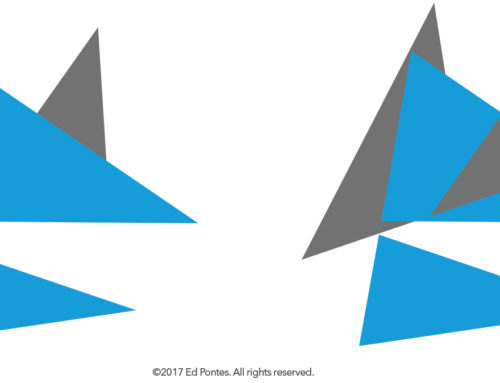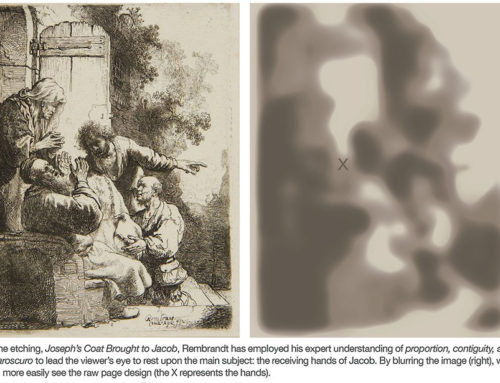There are as many drawing styles as there are artists in the world. If that sounds like an exaggeration, then we can at least agree that there are no less than a hundred. That being the case, how could I possibly recommend the best brands of charcoal for every artist? The short answer: I can't, but what I can do is approach this subject from an angle that may be helpful to many artists looking to get optimal performance from their charcoal.
Rather than taking the typical approach, with a side-by-side brand comparison, I'm going to take a different tact. I'll explain what and how I draw, then describe those things I find most useful and beneficial about the various brands I use during the process. In this way, you can pick and choose which effects and qualities most accurately relate to your own personal style and preferences. My hope is that you will find a new product to explore, which you might have otherwise overlooked. (That's what happened to me, and my discovery did, in fact, improve my process in a noticeable way.)
The first order of business is to describe the type of artwork I do. Like many artists, I dabble in a number of different styles, mediums, and techniques; but also like many other artists, I have my favorites. Most recently, I've been exploring and refining my figure drawings. In particular, I've been studying the history of figure drawing, from the Renaissance to the present, and focussing my efforts on anatomy. It is unlikely that you share this same focus right now; in fact, you may not have any interest in anatomy whatsoever. That's OK, because here our topic is charcoal performance, not artistic inspiration. And since figure drawing requires several charcoal products with a range of marks and densities, I should be able to cover a reasonable scope of needs.
For my drawing technique, and especially for the purpose of representing human anatomy at a medium scale (18 x 24 in., 46 x 61 cm), I find it important to achieve at least 5 types of marks: a faint easily-erasable stroke, a thin light stroke/hairline, thin dark stroke, broad light stroke (up to 0.25 inches, 7mm) and broad dark stroke. Since my drawings are mostly figure studies (as apposed to full drawings that involve a great deal of shading across the entire page), I don't regularly use charcoal dust or wide blocks. So, as the title of this blog has stated, my discussion will be limited to standard charcoal pencils and sticks.
I begin each drawing with a gesture that I confine within a given area, a faint perimeter, with guidelines at key locations across the surface. For both the gesture and the guidelines, I use an easily-erasable charcoal. The most erasable choices are the natural charcoal products, the vine and willow sticks. There are several popular brands, such as Grumbacher, Winsor & Newton, Coates, and Derwent, all of which are perfectly acceptable for the purposes I have described. However, my choice is Nitram, a natural charcoal brand that is manufactured in a manner that preserves the structure and durability of the wood during the burning process. Their unique manufacturing process produces a stronger stick that can be sharpened (i.e., sanded) to a sturdy point without breakage. The other big benefit of this product comes from the quality of the charcoal itself. The marks seem to hold better to the page; and there's less dust to fall or billow from the surface during use. The sticks come in three levels of harness, B, HB, and H. I use the HB product because I find the H too hard; it seems to scratch more than it marks the page. (For those who prefer the scratchy drag of a firm charcoal, or for those who like a super-light, almost invisible, reference line to indicate gestures and guidelines, then maybe the H is a better choice.) The B product is not useful to me because I don't typically use natural charcoal for the detailed line work, refinements, shadowing or rendering. There is one small hiccup in my recommendation of the Nitram HB stick. In the summer of 2016, the Nitram manufacturing facility experienced a devastating fire, and apparently during a period of oversight with their insurance coverage, so at this time supplies are low while they continue to raise funds to rebuild their facility. As I am writing this, the latest updates suggest that a new factory is planned for the not-so-distant future, so hopefully there will be sufficient inventory to meet our product demands throughout the reconstruction. (For those interested to learn about the details and fundraising efforts, you can visit https://www.gofundme.com/2a5gwbnf)
The next stage of my process involves contouring inside and outside the figure. This requires the use of middle-gray marks, which are both exploratory and descriptive, allowing me to better define the positioning and basic form of the various bones, muscles and curves throughout the body. During this phase, I'm essentially replacing the "temporary" lines of the natural charcoal with the "more permanent" lines of the charcoal pencil. (Below is a photo of a drawing, which was taken at this midpoint phase. Note the overall appearance created by the Nitram HB stick as this compares with the few areas where I've begun to incorporate the darker exploritory lines, especially in the feet and right hand.)
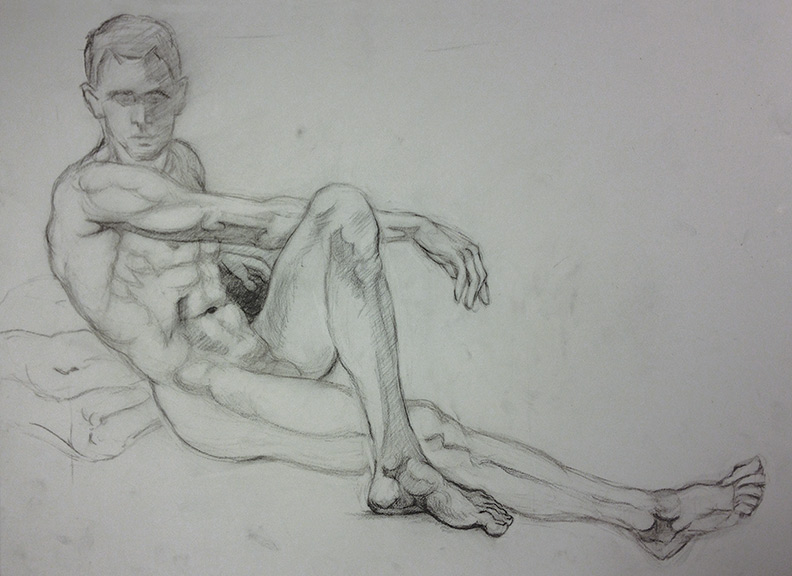
Since the drawing is still rough at this point, it's important to have a pencil that can make a variety of marks, from sharp lines to broad strokes; and they have to be made in such a way that remains easily erasable. There are three excellent options for these purposes: the Faber-Castell Pitt Charcoal H Pencil, the General's Charcoal Medium, and the Derwent Medium. Your choice should be determined by the types of lines you prefer to make. The Faber-Castell H product has two defining benefits: the charcoal has a larger diameter that delivers a sturdy point along with a wide taper that delivers broader strokes for improved shading; and secondly, the charcoal tends to be consistently softer than other brands. This H pencil produces a darker mark than most hard charcoals, and furthermore it glides nicely across the paper. If you need to make bold, smooth lines then you’ll love this pencil. The second alternative is the General's Charcoal Medium Pencil. The hardness level of this pencil, although Medium in its description, is actually harder than the Faber-Castell Hard Pencil. As many artists know, the hardness classifications across the different pencil companies are often contradictory in this way, so one can never compare pencils one-to-one, apples-to-apples. (See comparison photo below.)
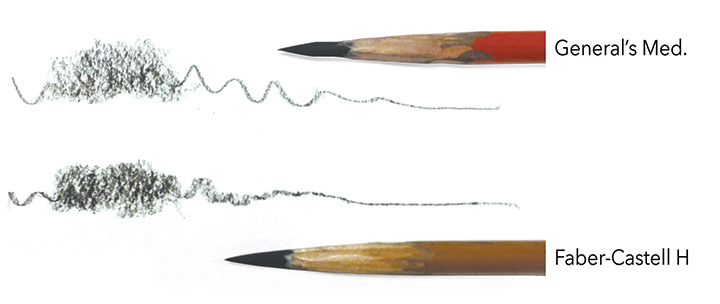
In effect, I consider the General’s Medium to be a hard pencil, even though it’s labeled Medium, and I don’t even bother buying the General’s Hard pencil. Just so I'm not misunderstood, let me make it clear that General's Charcoal makes a good quality H pencil; it's just not my preference. To me, it's not as consistent in cohesion as I would prefer, and often seems much too hard, scratching rather than gliding across the paper. This brings me to my last recommendation, a product that I consider to be the “Goldilocks” of medium-hardness charcoal pencils, the Derwent Medium. This pencil is easy to sharpen without breakage, and delivers the perfect range of marks between light wispy lines and medium dark strokes.
My final stage of drawing involves refinements in detail and contrast, which requires the production of uber-dark lines and shadows. For this, I prefer the General's Charcoal Soft Pencil, hands down. This product produces excellent shadow areas, and furthermore, it can be sharpened to a good point for detailed work. The trick is to sharpen it very carefully because it tends to crumble or splinter unless you have a very soft touch. To execute this delicate sharpening process, I first expose a reasonably long section of charcoal (about 1 cm / 0.375 in.) using a razor blade, then I gently form the point with a strip of sandpaper. I keep several pencils sharpened at once so I can use the points for detail and the dulled pencils strictly for shading. At the top of this article I've featured a recently completed figure study. Note the dark details created with General's Soft Pencil, especially those marks outlining the left arm, cheek and the underside of the body. In my view, General's product is unmatched for producing such clean, black lines with even the lightest touch. (I’ve also employed General's White Pencil for the highlights.)
In summary, my recommendations for the best charcoal products are not based on brand but rather strictly on performance. I choose the Nitram HB for the sharpest yet most easily erasable marks, the Derwent Medium for permanent and semipermanent middle-gray marks, and General's Soft for the richest, darkest details and shadowing.

